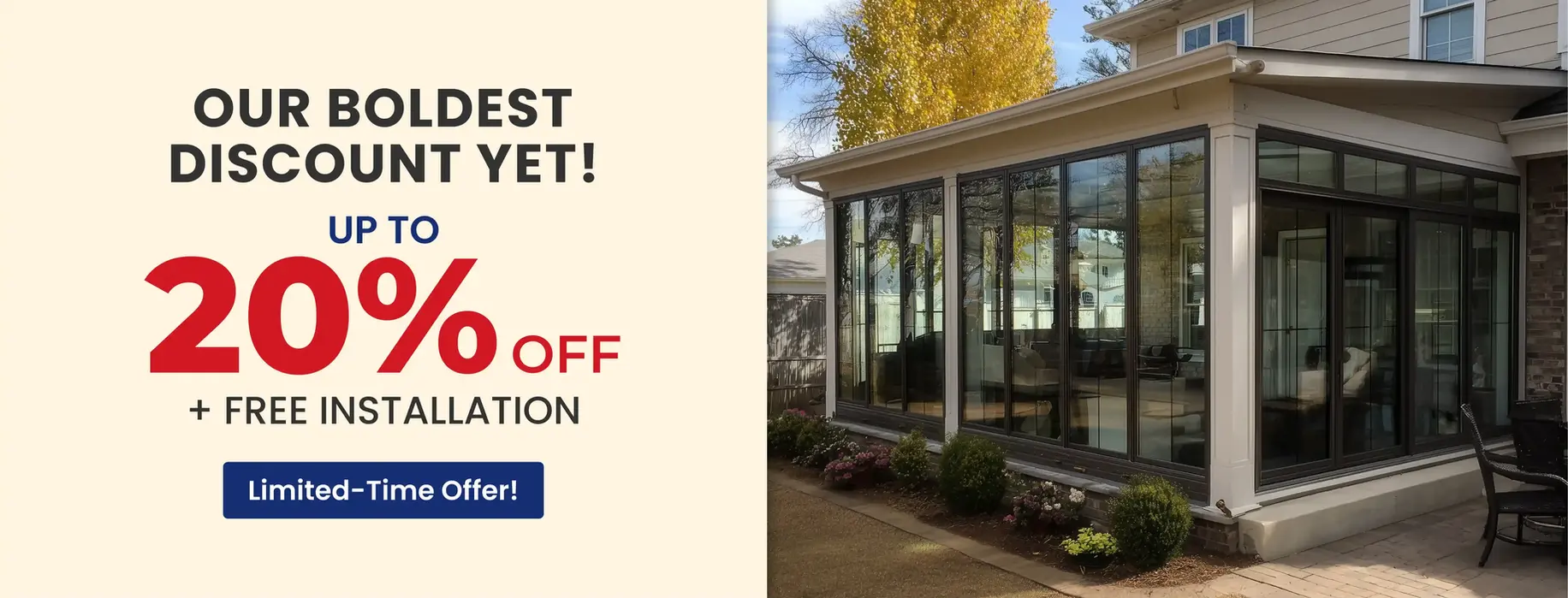Converting an Existing Patio into a Sunroom: What to Know
- Ava Reynolds

- 3 days ago
- 4 min read
If you’ve ever sat on your patio during a breezy Texas evening and wished you could enjoy that space year-round—without worrying about bugs, heat, or rain—you’re not alone. Many Texas homeowners are realizing that the best way to expand their living space and add value to their home is through a patio to sunroom conversion.
One of the best home improvements you can make is to convert your current patio into a comfortable, light-filled sunroom. You can enjoy the outdoors from the comfort of a climate-controlled, enclosed space thanks to its beauty and functionality. However, it's crucial to comprehend the steps, materials, and design choices involved in making the ideal sunroom before you jump in.

Why Convert Your Patio into a Sunroom?
A sunroom addition in DFW is more than just a home upgrade—it’s a lifestyle improvement. By converting your patio, you can enjoy benefits such as:
Year-Round Use: Enjoy your outdoor space through all four seasons, even during Texas’ scorching summers or cooler months.
Energy Efficiency: A properly built 4-season sunroom in Texas helps control temperature and reduce energy costs with insulated glass and walls.
Increased Home Value: Sunrooms add both square footage and curb appeal, making your home more attractive to future buyers.
Natural Light: Large windows bring in sunshine and warmth, creating a bright and relaxing environment.
Versatile Space: Use your sunroom as a home office, gym, reading area, or family lounge.
Essentially, it’s about creating a space where you can connect with nature—without dealing with Texas weather extremes.
What to Consider Before Starting Your Conversion?
Before hiring a sunroom builder in Texas, you’ll want to plan carefully to ensure your project meets your needs, timeline, and budget. Here are the key things to consider:
1. Structure and Foundation
Your existing patio must be structurally sound. Contractors will inspect the foundation to ensure it can support the added weight of walls, windows, and roofing. Some patios might need reinforcement or an extended slab for proper installation.
2. Permits and Regulations
Local Texas building codes may require permits for a patio to sunroom conversion, especially if electrical wiring or HVAC systems are being added. A licensed sunroom contractor in Texas will handle these permits for you, ensuring your project complies with all regulations.
3. Sunroom Type
Decide whether you want a three-season or four-season sunroom:
Three-season sunroom: Ideal for spring through fall, with basic insulation and windows.
Four-season sunroom: Fully insulated, energy-efficient glass, and climate control for all-year comfort.
If you want a space that’s usable even during the peak of summer or chilly winter mornings, a 4-season sunroom in Texas is worth the investment.
4. Design and Materials
Your sunroom should complement your home’s architecture. Options include aluminum framing for modern durability or vinyl for a clean, low-maintenance finish. You can also choose glass types like double-pane or low-E for better insulation and UV protection.
Flooring choices range from tile and laminate to weather-resistant vinyl planks that handle temperature fluctuations.
The Process: From Patio to Sunroom
A successful patio to sunroom conversion typically follows these steps:
Consultation & Design: Meet with a sunroom builder in Texas to discuss your goals, preferences, and budget. They’ll create a custom design tailored to your home’s style and layout.
Inspection & Measurements: Your existing patio will be evaluated for stability and dimensions.
Permitting & Approval: The contractor will secure the necessary permits before starting work.
Construction: Walls, windows, roofing, and flooring are installed according to your design. Insulation and electrical work are added for comfort and functionality.
Finishing Touches: The final steps include painting, lighting, and decor to create a seamless transition from your home’s interior to the new sunroom.
Depending on complexity, the project can take anywhere from a few weeks to a couple of months.
Screen Rooms vs. Sunroom Conversion
Some homeowners in Texas consider screen rooms instead of full sunrooms. While screen rooms provide an open-air experience and cost less, they lack insulation and weather protection.
If you want to enjoy your space throughout the year—rain or shine—a patio to sunroom conversion offers far more comfort and usability.
Why Hire a Professional Sunroom Contractor in Texas?
Attempting a sunroom conversion on your own can lead to costly mistakes. Professional sunroom contractors in Texas ensure:
Proper structural integrity and insulation.
Code-compliant construction.
Seamless integration with your existing home design.
The best sunroom builders also help you choose the right materials, window styles, and energy-efficient options suited for Texas’ unique climate.
Conclusion
Converting an existing patio into a sunroom is one of the best ways to enhance your home’s comfort, value, and beauty. It transforms your outdoor space into a bright, livable area you can enjoy year-round—whether you’re relaxing, entertaining, or simply soaking in the view.
For homeowners in Texas, American Eagle Builders stands out among the best sunroom builders and sunroom contractors in Texas. Their expertise in sunroom additions in DFW, 4-season sunrooms, and patio to sunroom conversions ensures your new space is energy-efficient, durable, and perfectly tailored to your lifestyle.
Trust American Eagle Builders to bring your dream sunroom to life—with quality craftsmanship that shines as bright as the Texas sun.









Comments